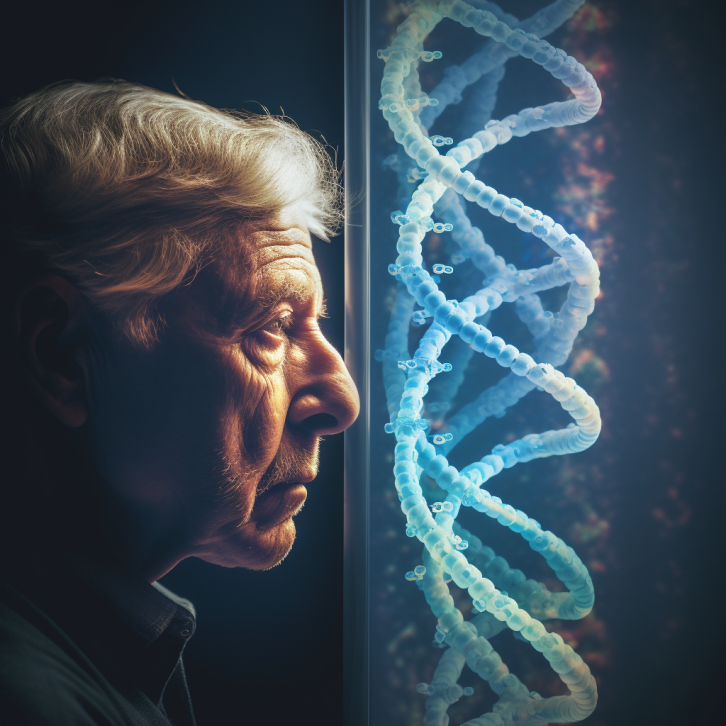Alzheimer’s disease continues to destroy minds, but new gene editing techniques like CRISPR offer hope for better understanding and treating this devastating illness.
Key Facts:
- Alzheimer’s disease is a complex, poorly understood neurodegenerative disorder affecting over 50 million people worldwide.
- Gene mutations play a role in early-onset Alzheimer’s, but late-onset Alzheimer’s involves a more complex interplay of genetic and environmental factors.
- CRISPR gene editing tools like CRISPR/Cas9 allow precise modification of genes to study disease mechanisms and potentially correct mutations.
- CRISPR has been used to model Alzheimer’s in cells and animals, providing insights into disease pathways like endosome and amyloid-beta dysfunction.
- Correcting mutations in genes like APP and PSEN1 with CRISPR reduced Alzheimer’s pathologies in cells and improved cognition in animal models.
- Challenges remain before CRISPR can be safely applied clinically, but it provides a promising approach for elucidating and treating Alzheimer’s disease.
Source: Front Genome Ed.
The Devastating Impact of Alzheimer’s Disease
Alzheimer’s disease is the most common form of dementia, affecting over 50 million people globally.
It progressively destroys memory, cognition and personality, taking away independence and dignity.
Despite decades of research, there are no disease-modifying treatments. Available drugs only temporarily ease symptoms without altering the course of decline.
Alzheimer’s poses a staggering emotional, financial and societal burden, with care costs projected to exceed $1 trillion in the US alone by 2050 if no meaningful therapies are developed.
There is an urgent need for better understanding of Alzheimer’s disease mechanisms and more effective treatments.
The Role of Genetics in Alzheimer’s
While the causes of late-onset Alzheimer’s are complex, genetics are known to play an important role.
Rare mutations in genes like amyloid precursor protein (APP) and presenilin 1 and 2 (PSEN1, PSEN2) lead to aggressive early-onset Alzheimer’s.
The APOE4 gene variant is a major risk factor for late-onset Alzheimer’s.
Genome-wide studies have associated over 50 genetic loci with increased Alzheimer’s risk.
However, how these genetic variations contribute to disease development remains unclear.
This lack of mechanistic understanding has hindered drug development efforts.
CRISPR Gene Editing Offers Clues to Alzheimer’s Pathology

Powerful new gene editing techniques like CRISPR/Cas9 promise to illuminate the genetic underpinnings of Alzheimer’s disease.
CRISPR allows researchers to selectively modify genes in cells and animal models to see how this alters disease phenotypes.
This can provide insights into which mutations drive pathology and what mechanisms they disrupt.
Several CRISPR studies found that genes related to endosome function and immune pathways affect amyloid-beta uptake and aggregation when altered.
Other work linked presenilin mutations to increased amyloid-beta 42 levels.
Correcting APP and PSEN1 mutations with CRISPR in patient-derived neurons decreased amyloid-beta production and improved electrophysiological function.
CRISPR has also helped establish better animal models of Alzheimer’s, like SIGMAR1 and SORL1 knockout mice that display disease-associated cognitive deficits and neuropathology.
Being able to closely mimic the genetics of familial Alzheimer’s in cells and animals has expanded research capabilities.
Exciting Potential for CRISPR Alzheimer’s Treatment
Beyond modeling Alzheimer’s, CRISPR gene editing holds promise as a novel treatment approach.
Correcting mutations that drive early-onset Alzheimer’s could potentially prevent, delay or even reverse damage in mutation carriers.
Proof-of-concept studies corrected APP and PSEN1 mutations in patient fibroblasts and PSEN2 mutations in iPSC-derived neurons via CRISPR.
This normalized amyloid-beta levels and electrical functioning.
Other work successfully edited BACE1 to reduce amyloid-beta production in Alzheimer’s model mice and improve cognition.
CRISPR may also be able to modify risk genes like APOE4 to lower Alzheimer’s risk.
Converting APOE4 to APOE3 in human astrocytes was demonstrated using targeted base editing.
Isogenic iPSC neurons with APOE3 genotypes exhibited reduced Alzheimer’s pathologies versus APOE4.
Challenges with CRISPR for Alzheimer’s Treatment
While exciting, applying CRISPR clinically to prevent or treat Alzheimer’s faces obstacles.
Delivery to the human brain is challenging. Ethical concerns exist around embryo gene editing.
Ensuring safety and specificity of editing in neurons needs to be demonstrated.
Most Alzheimer’s cases are not attributable to a single mutation, so correcting multiple genes may be required.
Nonetheless, the prospects CRISPR enables for elucidating Alzheimer’s genetics and testing new therapeutic approaches are enormously promising.
There is finally hope that the vicious grip Alzheimer’s disease has on patients and families across the world may someday be broken through advanced gene editing techniques like CRISPR/Cas9.
While challenges remain, CRISPR has opened up a new era of possibilities for combating this devastating illness.
References
- Study: Gene editing and alzheimers disease: is there light at the end of the tunnel?
- Author: Mikhail Stepanichev (2020)







